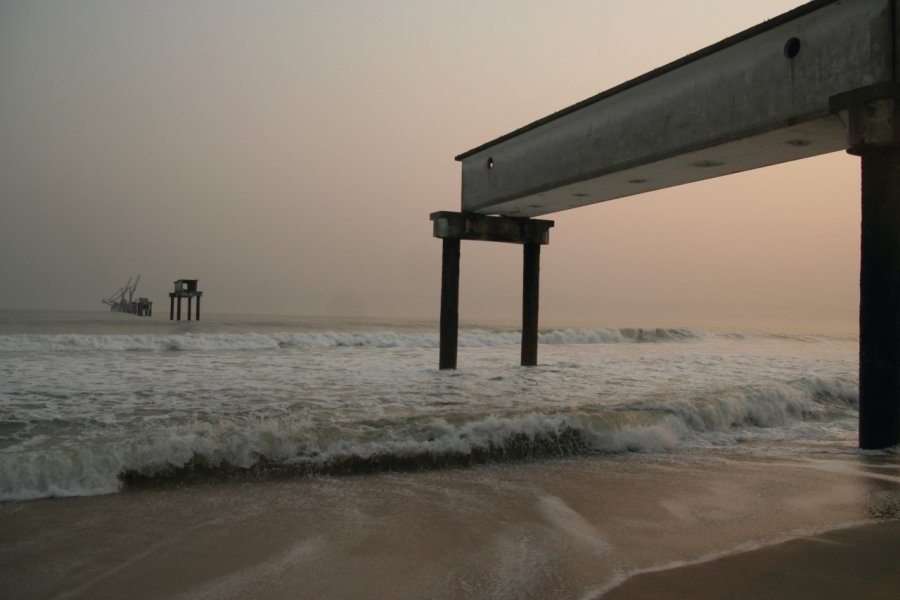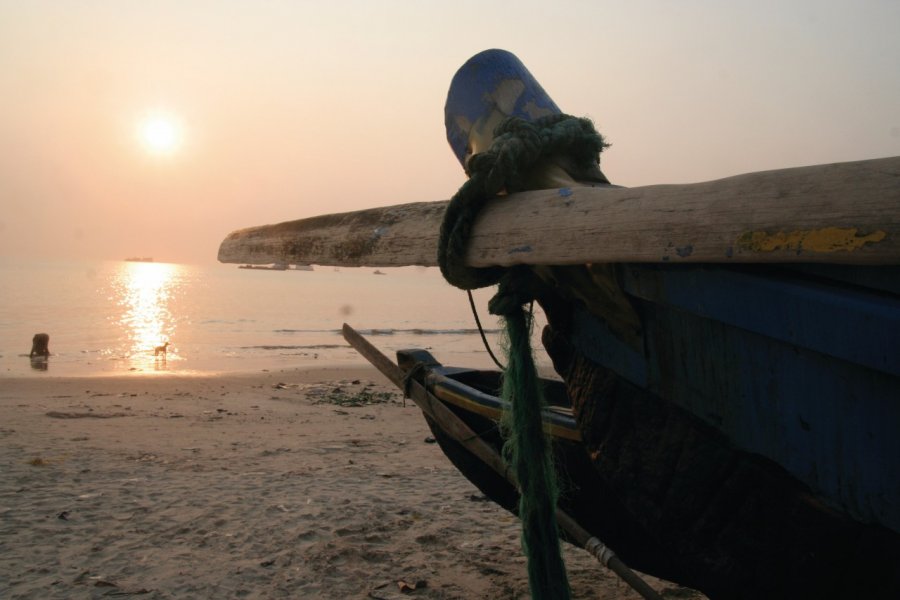Travel Guide Pointe Noire
Find an accommodation
Advertising
Born a little less than a century ago the colonial needs of France, Pointe-Noire, also known as Ponton La Belle or Ndindji, now account for more than a million inhabitants, the Ponténégrins. Even though it is "only" the second city in terms of population, it is undoubtedly the other capital of Congo, the one where money takes precedence over politics. Since the early 1980 s, Pointe-Noire has steadily developed, attracting the Congolese from all over the country, attracted by the higher wages that the players in the oil sector proposed. Moreover, it does not attract the premises: a large community of expatriates - the largest in the country - gives the city its cosmopolitan and multicultural face. A development that allowed the city, the first outpouring of currency, to suffer less during the conflicts that broke the country: it was spared destruction because it says «If Pointe-Pointe burns, Congo dies» attracting the populations fleeing the army's exactions and militias in the villages or the tensions of Brazzaville (some merchants will easily tell you their story at the detour of the conversation). Many of them have not left, and one of the city's major challenges remains urban planning. For the time being, the bet is not earned in the face of the city's headaches at peak hour!Pointe-Noire, for the visitor, means enjoying the hubris. Despite the presence of companies and oil platforms, the city enjoys a certain amount of life: The presence of the ocean gives it breath, its wild coastline has a seaside resort with its hotels, restaurants, villas and appointments at the time of aperitif. Its beach is a kind of corso where all the communities cross the weekend, with the Wharf. To look even closer, as soon as we leave the city center, the Congo resumes its rights: popular neighborhoods, small shops, market, and just a few steps away, a near-wild seaside and beautiful forest.So yes, it's true, there are also many expatriates with a lot of money and the atmosphere can quickly fire glaup in some bars and restaurants. It is impossible to ignore the demands of women in downtown, much more visible here than in Brazzaville - even though it exists in the same way. Easy money and the prospect of getting favors, even papers and a marriage in due form, is a solution like another to get out of a poor neighborhood. However, all expatriates do not agree with this type of practice, and many of them can also make you live in the country in their own way.History. Portuguese navigators were given the discovery of the Pointe-Noire site shortly after the discovery of the mouth of the Congo River by Diego Cao in 1482. On the coast a rocky spur of black stones, they baptized the place Punta Negra. Until the arrival of the French in the nineteenth century, Punta Negra will remain a simple point of reference on navigational charts.Loango was the real economic hub of the region where the kingdom of the Kingdom of Comoros prospered through trade with Europeans and the slave trade.On March 23, 1883, like the protectorate agreements signed between Savorgnan de Brazza and King Makoko on the banks of the river Congo, a similar agreement was signed with King Maloango by a French lieutenant, Cordier, thereby putting an end to the political independence of the kingdom.The Berlin Conference in 1885 will legitimize the treaties signed by the colonial powers and will give these territories to France, territories which later became Middle Congo Territory in 1903, until 1908, integrated all of the colonies of French Equatorial Africa, A.E.I. Current Central Africa, Gabon and Chad. The seat of the Governor of the B.E.I. is set in Brazzaville.At that time, the location of the city of Pointe-Noire exists only in the form of villages, which now become neighborhoods: Mbou Mvoumvou (currently center of Pointe-Noire), Loandjili, Siafoumou, Mpita, Tchimbamba… In 1911, the idea of a railroad connecting Brazzaville to the Atlantic and making it easier to evacuate A.E.F. raw materials was born. Brazzaville is indeed the terminus of river navigation linking the Oubangui (current Centrafrica) to the Congo: the fast speed of the Pool prevents any navigation.Originally planned in Libreville, the choice of Pointe-Noire will eventually prevail, not only because of a shorter route, but also from the deep water configuration of the coast. The decree was signed in Paris in 1914, and the first stroke of work for the construction of the railway and the port of Pointe-Noire was given in 1921 by the governor of the B.E.I., Victor Augagneur.The construction of the Wharf in 1926, in order to facilitate the landing of equipment for the railway, under the aegis of the new Governor Raphael Antonietti, and finally the inauguration of the Congo-Ocean Railway (CFCO) in 1934, eventually confer city status on Pointe-Noire.
What to visit Pointe Noire?
Advertising
Suggested addresses Pointe Noire
Weather at the moment
Advertising
Organize your trip with our partners Pointe Noire
Transportation
Book your plane tickets
Car Rental
Boat rental
Accommodation & stays
Find a hotel
Holiday rental
Find your campsite
Tailor-made trip
Immersion travel
Services / On site
Activities & visits
Find a doctor
















